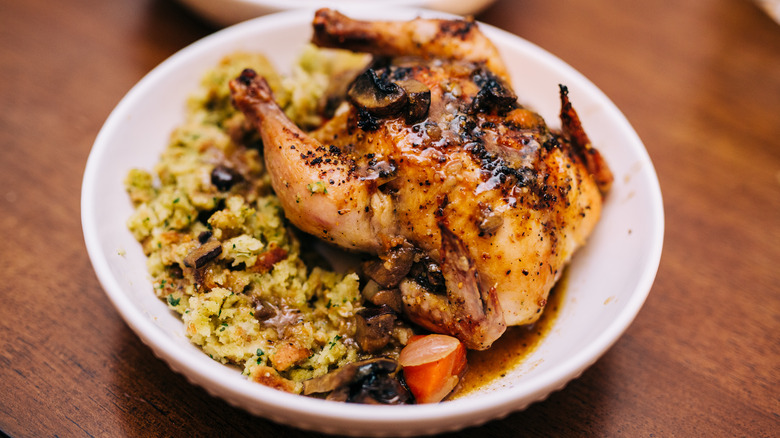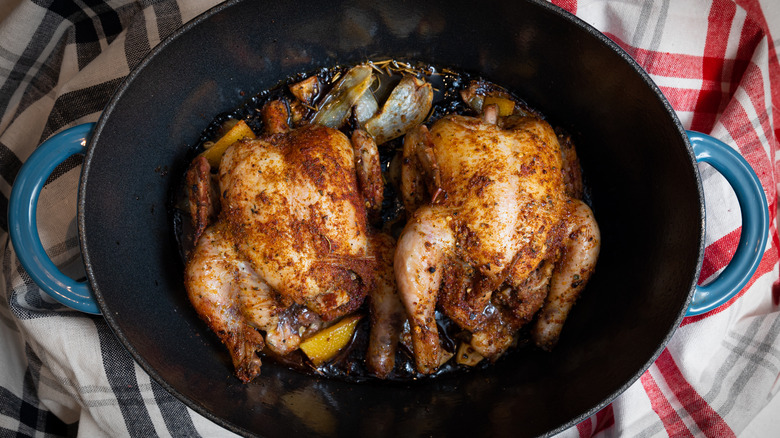Why Cornish Hens Are More Tender Than Regular Chicken
The name 'Cornish game hen' conjures up a specific image in the mind. First, you have the Cornish element, which Britannica links to the old Celtic language once spoken in Cornwall, England. Then there is the 'game' aspect, indicating wild game meat that one might hunt for themself. Finally, you have 'hen,' which, lest you've forgotten, Merriam-Webster defines as a female chicken. Put them all together and you can picture an English hunting party moving through the woodlands of Cornwall, keeping their eyes and ears peeled for any sight or sound of a hen. Except, none of that would be accurate, because the term 'Cornish game hen' is a complete misnomer.
Firstly, they aren't from Cornwall. HowStuffWorks traces its origin to Connecticut in 1949 when farmer Alphonsine Makowsky crossbred domestic chickens with game birds to produce Cornish game hens, also known as Rock Cornish game hens. Of course, not every member of the species is a hen either. Slate attributes the popularity of Cornish hens to the famed entertainer Victor Borge. The Danish-born musician and comedian was well known for his appearances on Bing Crosby's radio show, per IMDb, but he also left a legacy in the kitchen. Slate notes that Borge was one of the first people to raise and sell Cornish hens, and he attached a tag to each one with his name on it. Star power sells. But if Cornish game hens are really an alternative breed of chicken, why don't we just eat regular chicken?
Size and age make all the difference
One glance will tell you the most apparent difference between Cornish hens and regular chicken is their size. This is less a function of the breed than of age. The United States Department of Agriculture classifies the Cornish game hen as "an immature chicken younger than five weeks old (previously five to six weeks), of either sex, with a ready-to-cook carcass weight of two pounds or less." Conversely, the USDA defines a broiler chicken as younger than 10 weeks old and a roasting chicken as eight to 12 years old.
HowStuffWorks reveals that the younger age and smaller size of Cornish hens results in meat that is more tender and juicy than that of an older, larger chicken. Another key difference in cooking is the bird's skin, as Cornish hens have thinner and more delicate skin than larger chickens. Your Meat Guide prefers Cornish hen over regular chicken due to the extra tender and juicy meat, which elevates the flavor, as well as their potential for elegant plating since you can serve a whole bird to one person. However, it's important to note that Cornish hens are pricier than regular chickens, so you may want to break it out for a special occasion.

